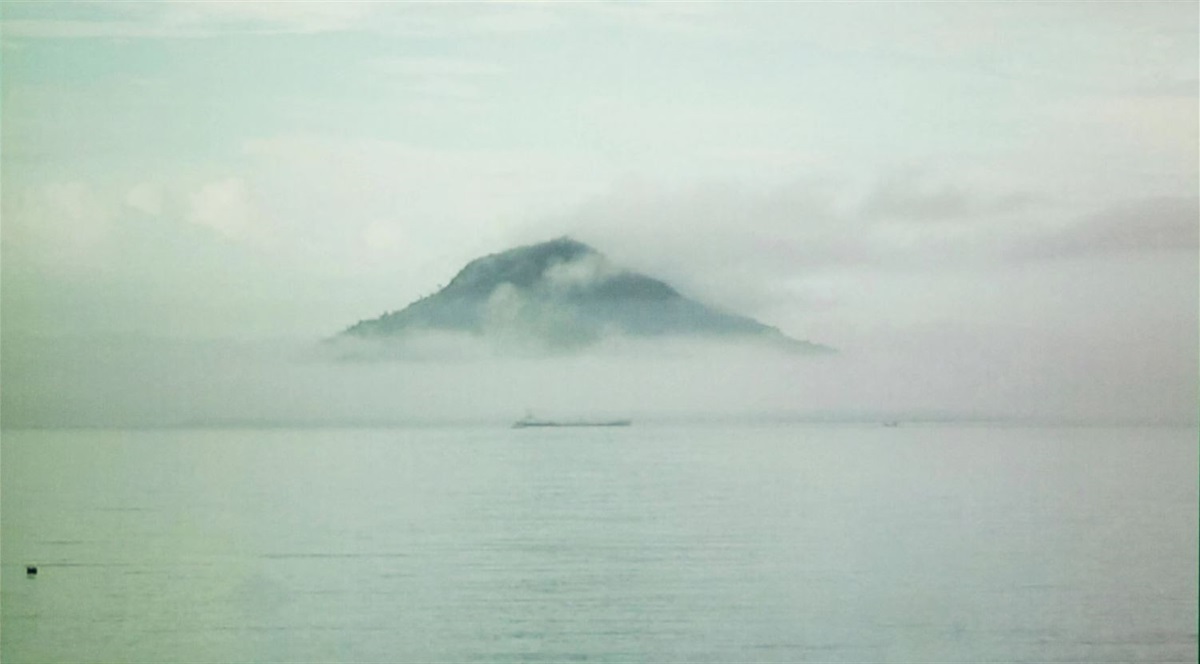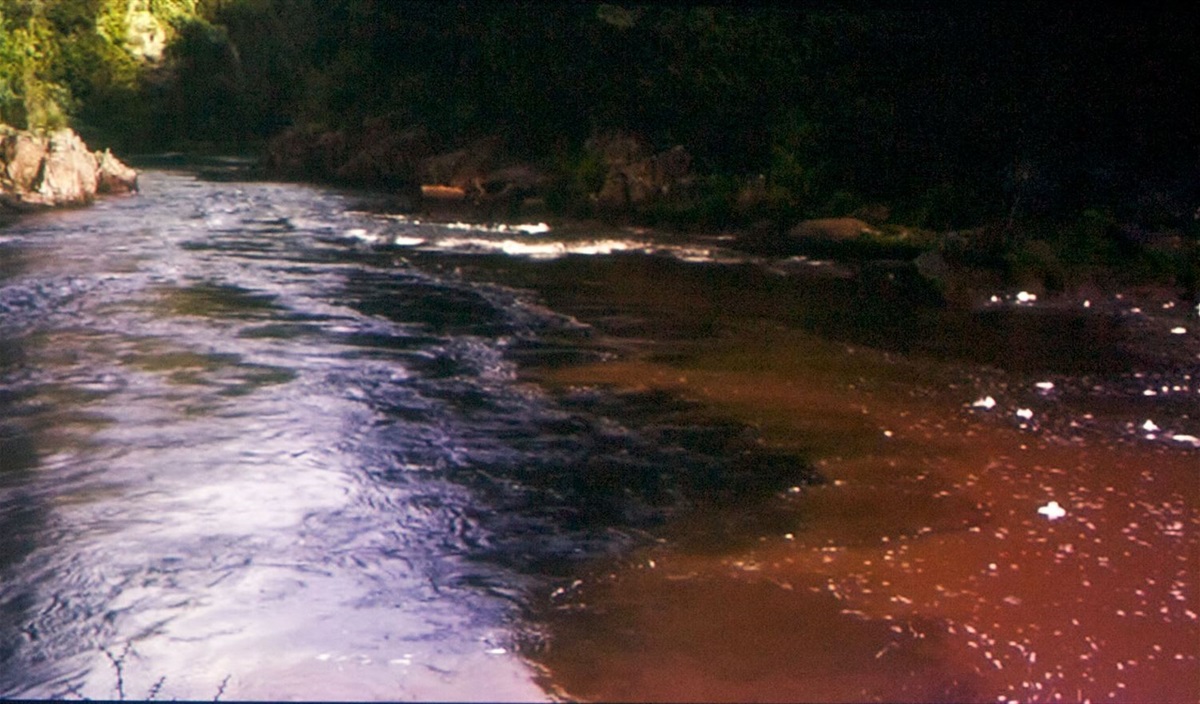COPPER SHIPS, 2011
HD video with sound loop
Lake Margerat Teshima House
Duration: 5 minutes
Queenstown
Duration: 10 minutes
Teshima Ships
Duration: 14 minutes
Camera: Sue Pedley – loop diptych.
Editor: Virginia Hilyard
Locations: Teshima Island, Seto Inland Sea, Japan, and the confluence of the Queen and King Rivers, Queenstown, Tasmania.
The global trade in contamination from the resources and refining industries is tracked from Queenstown, Tasmania, where copper ore is sourced, to the smelters close to Teshima Island in Japan. At the juncture of the King and Red Rivers in Tasmania, one half of the waters run clear, with the other running red from the leachate, an ongoing legacy from the copper mining operations upstream.
Moonscapes, denuded of vegetation, now mark the mining zone around Queenstown, source of the ore, and also the site of the ore’s destination, the smelter on Naoshima Island close to Teshima. Post-World War II, this smelter was a major customer for Tasmanian copper ore. Additionally, Teshima, now remediated, had been an illegal toxic waste dump from 1970 to 1990, with the fishing, the livelihood of the local village, badly impacted by the contaminated waters from the smelter.
ARTIST PROFILE
Sue Pedley is known for large-scale drawings in multiple mediums,
site-contingent multimedia installations and collaborations. She has worked extensively in the Asian region for more than twenty years, across Japan, China, Vietnam and Sri Lanka, participating in the Echigo Tsumari Art Triennial (2006 & 2018) and Setouchi Triennial (2010), where she worked closely with rural communities and volunteers. The environmental degradation of water and its impact on communities and the natural world is a recurring theme: in 2022, she collaborated with Phaptawan Suwannakudt on Line Work: Rivers of the Basin, a response to the Nepean River at the site where Penrith Regional Gallery is located. And in 2019, she exhibited a large-scale drawing in soot and ink, Otolith: in the ear of the fish in the Manly Dam project at the Manly Art Gallery and Museum. Her work frequently involves exchanges with dedicated activists, scientists, rangers, engineers and ecologists, and is noted for her incorporation of dense accumulations of materials such as wool thread, seaweed, cloth and fleece, bamboo, seeds, plaster and stone into her ephemeral installations.
suepedley.com.au

Image: Sue Pedley Copper Ships - Teshima Ships (still), 2011

Image: Sue Pedley Copper Ships - Queenstown (still), 2011